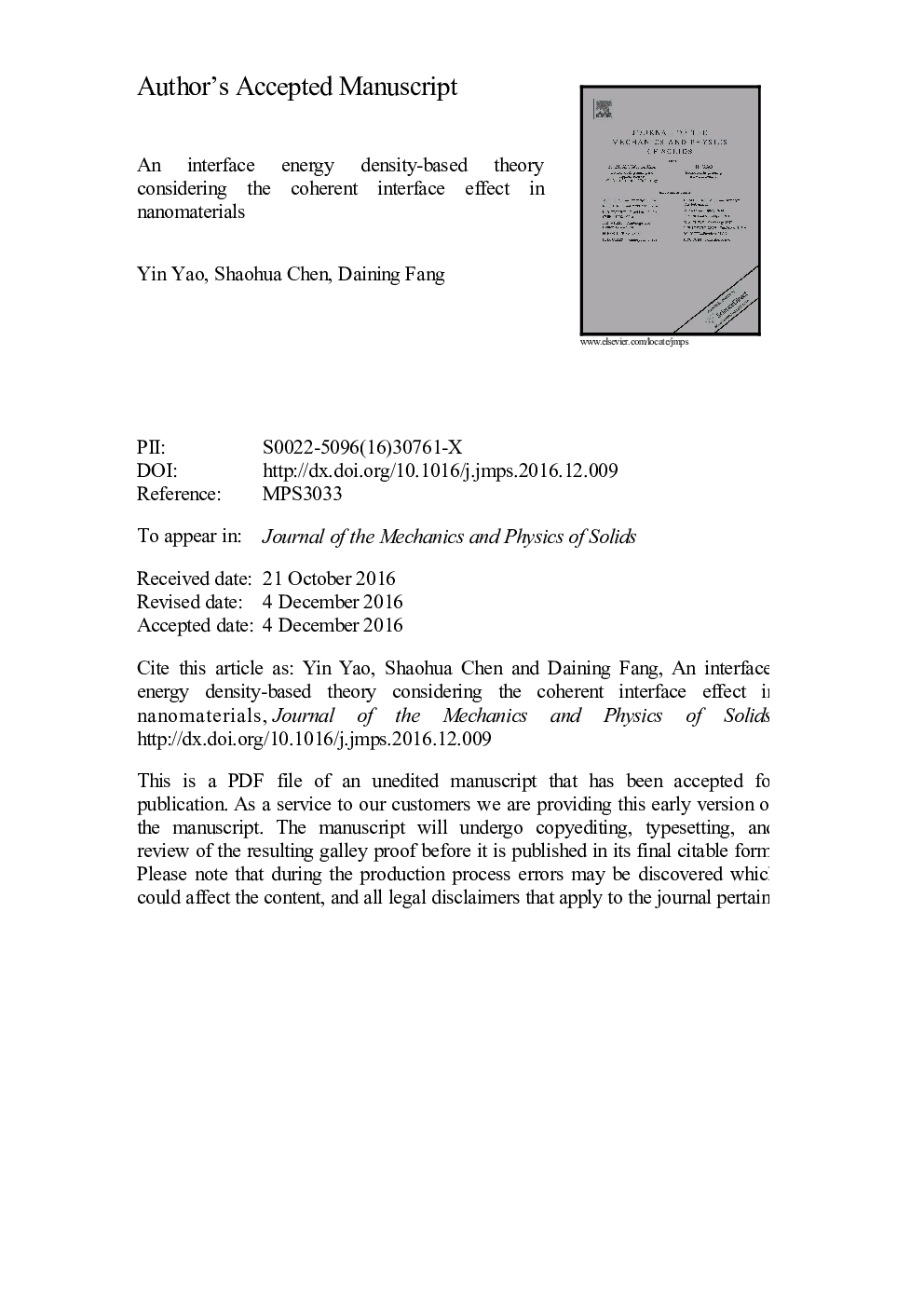| Article ID | Journal | Published Year | Pages | File Type |
|---|---|---|---|---|
| 5018311 | Journal of the Mechanics and Physics of Solids | 2017 | 54 Pages |
Abstract
To characterize the coherent interface effect conveniently and feasibly in nanomaterials, a continuum theory is proposed that is based on the concept of the interface free energy density, which is a dominant factor affecting the mechanical properties of the coherent interface in materials of all scales. The effect of the residual strain caused by self-relaxation and the lattice misfit of nanomaterials, as well as that due to the interface deformation induced by an external load on the interface free energy density is considered. In contrast to the existing theories, the stress discontinuity at the interface is characterized by the interface free energy density through an interface-induced traction. As a result, the interface elastic constant introduced in previous theories, which is not easy to determine precisely, is avoided in the present theory. Only the surface energy density of the bulk materials forming the interface, the relaxation parameter induced by surface relaxation, and the mismatch parameter for forming a coherent interface between the two surfaces are involved. All the related parameters are far easier to determine than the interface elastic constants. The effective bulk and shear moduli of a nanoparticle-reinforced nanocomposite are predicted using the proposed theory. Closed-form solutions are achieved, demonstrating the feasibility and convenience of the proposed model for predicting the interface effect in nanomaterials.
Related Topics
Physical Sciences and Engineering
Engineering
Mechanical Engineering
Authors
Yin Yao, Shaohua Chen, Daining Fang,
